We had to go all the way to Montana to find a cooperative Ferruginous Hawk but three days ago we found one in Beaverhead County. My files on this species are woefully lacking and it’s not because I haven’t worked hard at getting acceptable images of them. I’ve made many trips to the island mountain ranges of western Utah specifically to photograph this handsome raptor but until this last week I could count the number of nice images I had of them on one hand. They just won’t let me approach them.
This single bird made the enitre trip well worth it. The Ferruginous Hawk has been described as “the largest, most powerful and grandest of our buteos – a truly regal bird”. In fact the scientific name for the species is Buteo regalis – a fitting descriptor of this hawk.
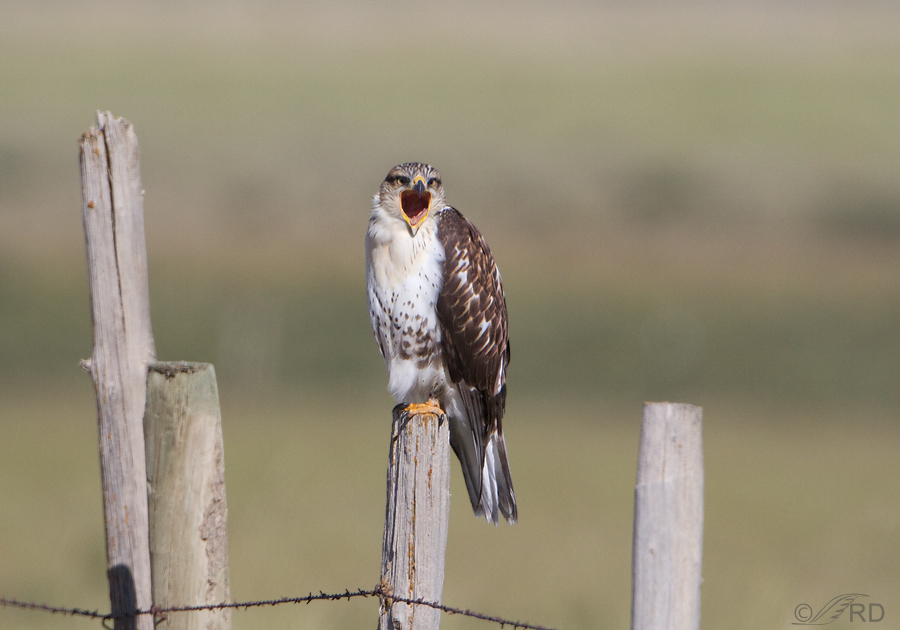
1/4000, f/6.3, ISO 640, 500 f/4, 1.4 tc
We found this bird on our way home, beside a long and isolated dirt road and I was even pulling my camping trailer which didn’t spook it. This first shot was taken from some distance because I assumed it would fly off when we got closer. It didn’t. Here it looks like the bird is upset with us for coming along but I think it was reacting to another Ferruginous Hawk that was in the vicinity (though we didn’t yet know it was there). This road has quite a bit of traffic (horse trailers, logging trucks etc) considering how isolated it is and since these birds are “sit and wait hunters” I believe this bird is accustomed to the traffic and was reacting to the other hawk rather than to us.
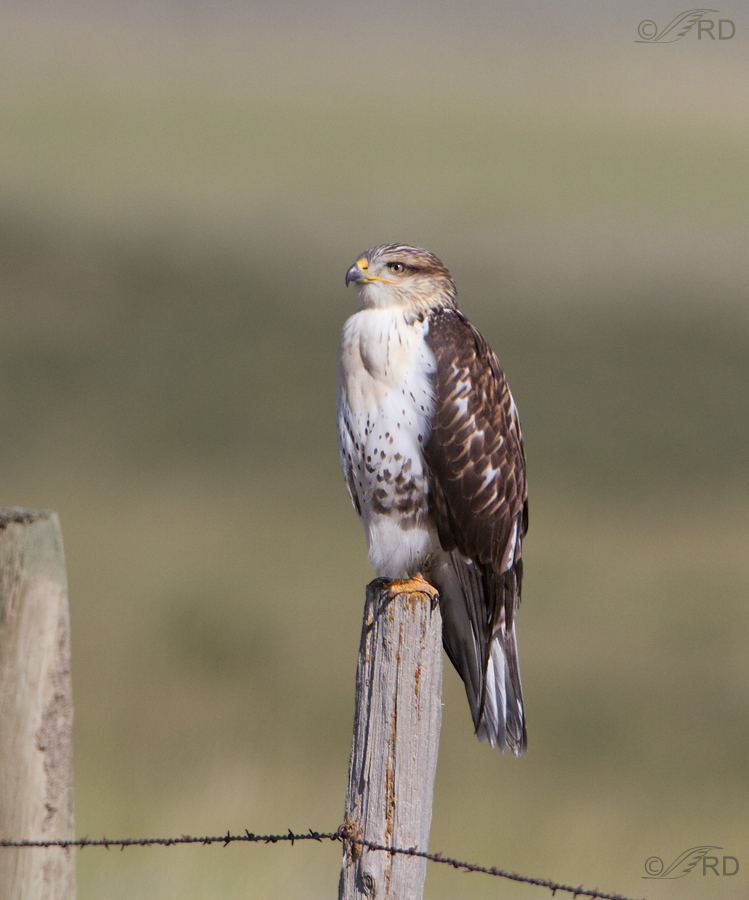
1/6400, f/6.3, ISO 640, 500 f/4, 1.4 tc
It soon let us get closer, which surprised me.
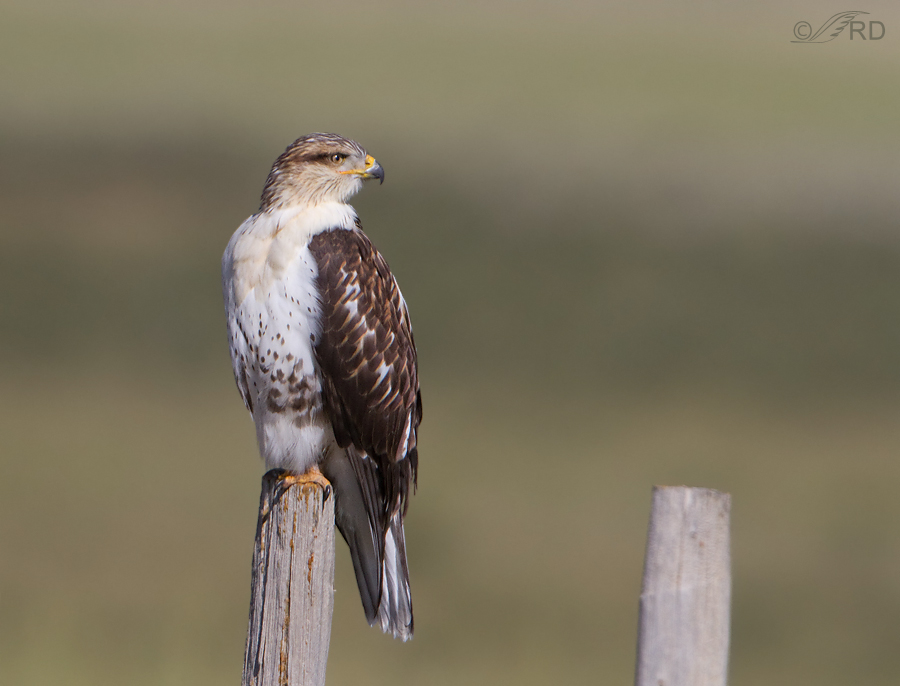
1/5000, f/6.3, ISO 640, 500 f/4, 1.4 tc
It gave us a few varying poses as it was scanning the area for prey and was obviously unconcerned with our presence – even with me jockeying the position of my pickup and trailer for a good light angle.
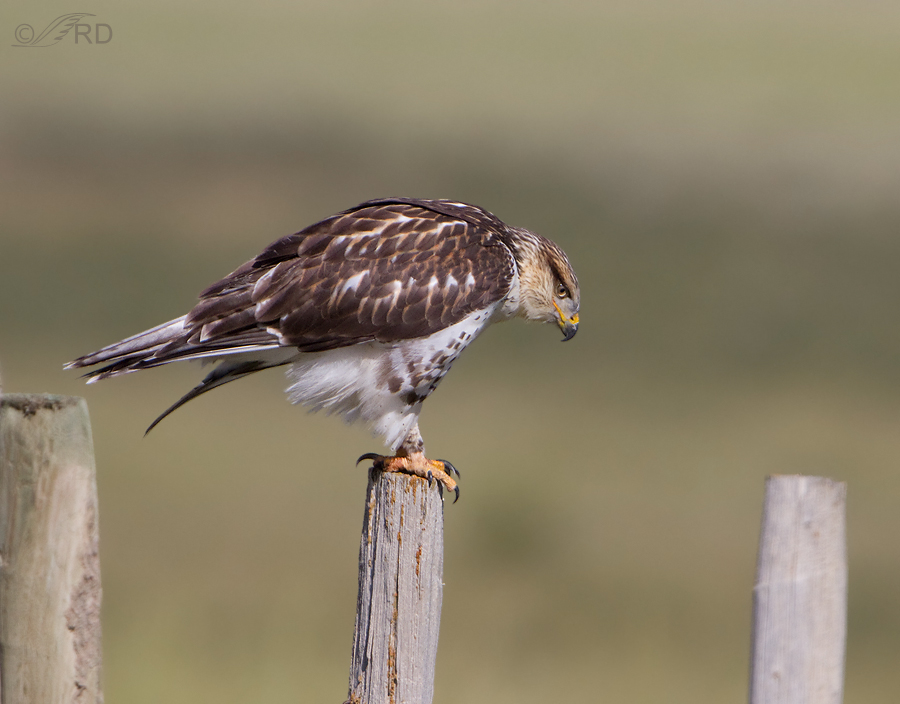
1/4000, f/6.3, ISO 500, 500 f/4, 1.4 tc
It switched position on the post to scan in a new direction and very quickly saw potential prey in the grasses in that direction so it…
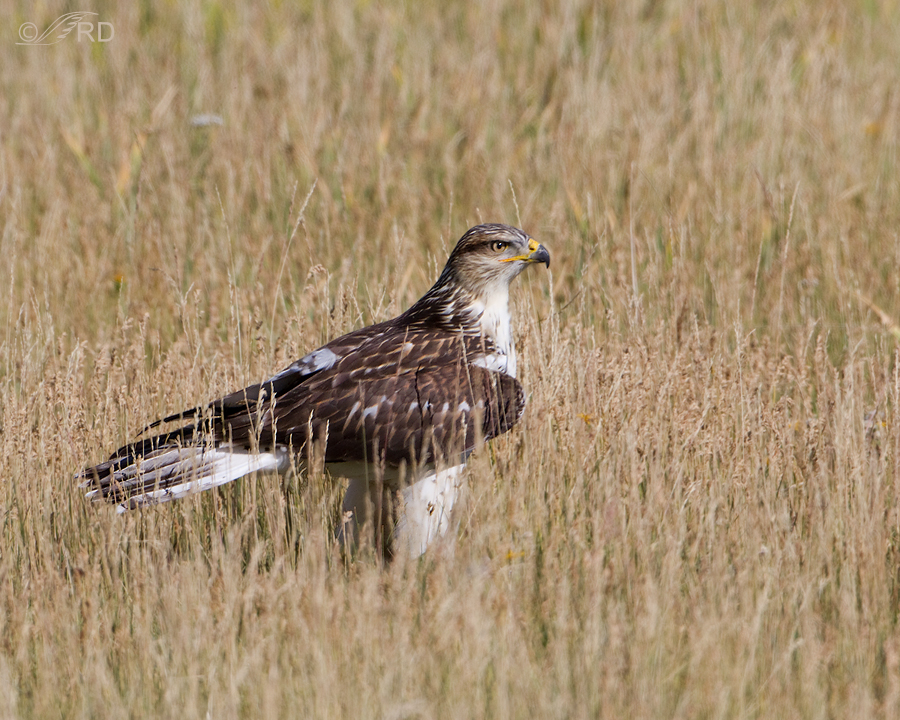
1/3200, f/7.1, ISO 400, 500 f/4, 1.4 tc
took off and chased something around in the grasses for a few seconds but came up empty-taloned.
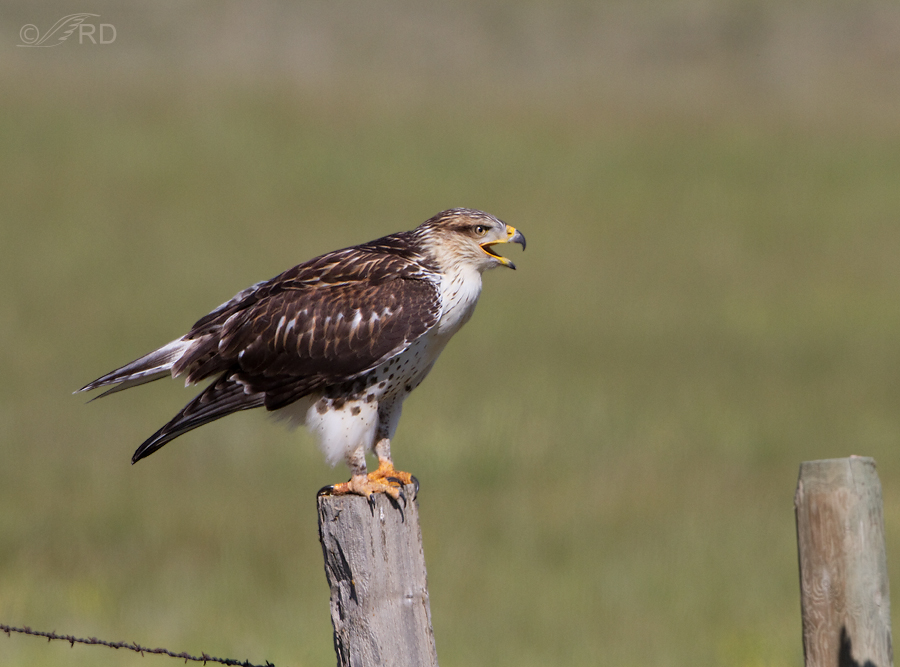
1/2500, f/7.1, ISO 400, 500 f/4
It then flew back to another post very near by (I don’t think I even had to move my pickup to shoot the hawk on the new perch). It called a few times – I assume to the other hawk that appeared about this time.
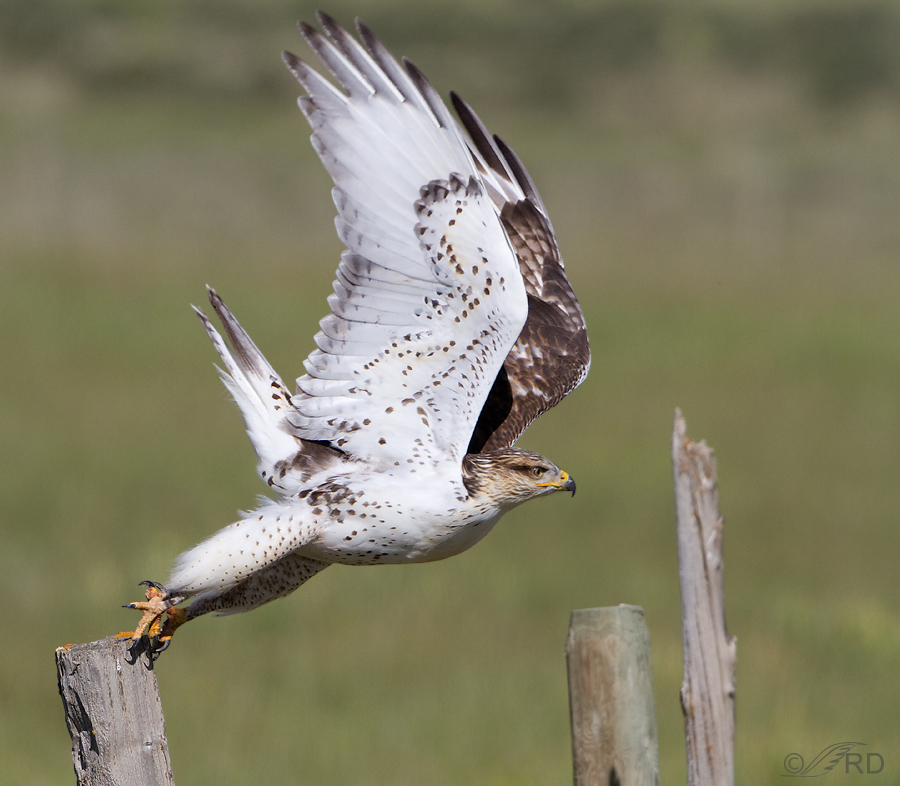
1/2500, f/7.1, ISO 400, 500 f/4
I was a little too close when it took off to get an ideal composition (even without my tc attached) but at least I managed not to clip anything as it launched.
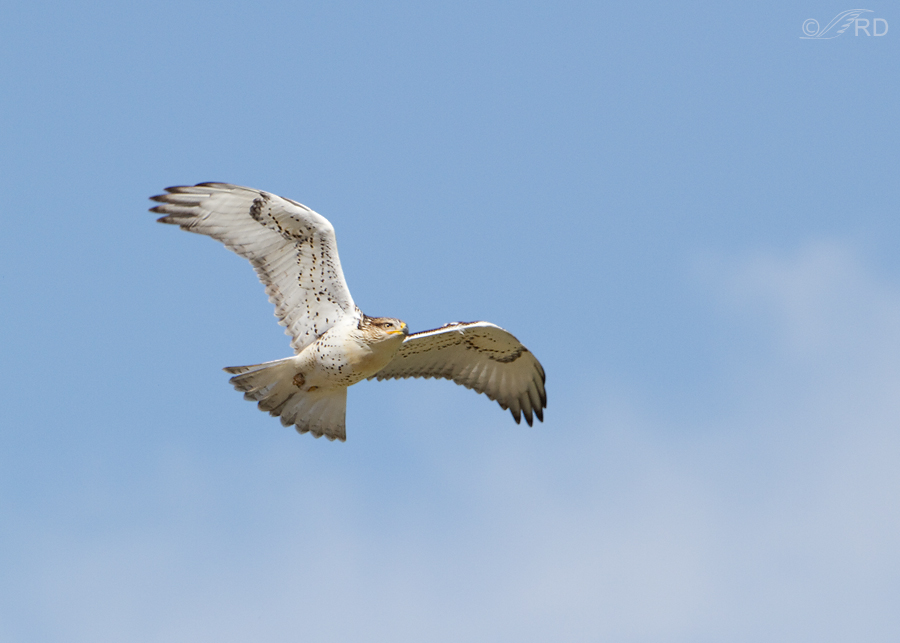
1/1250, f/7.1, ISO 400, 500 f/4
Then it circled around and passed overhead as if it wanted to give us some more photographic opportunities before it went on its way.
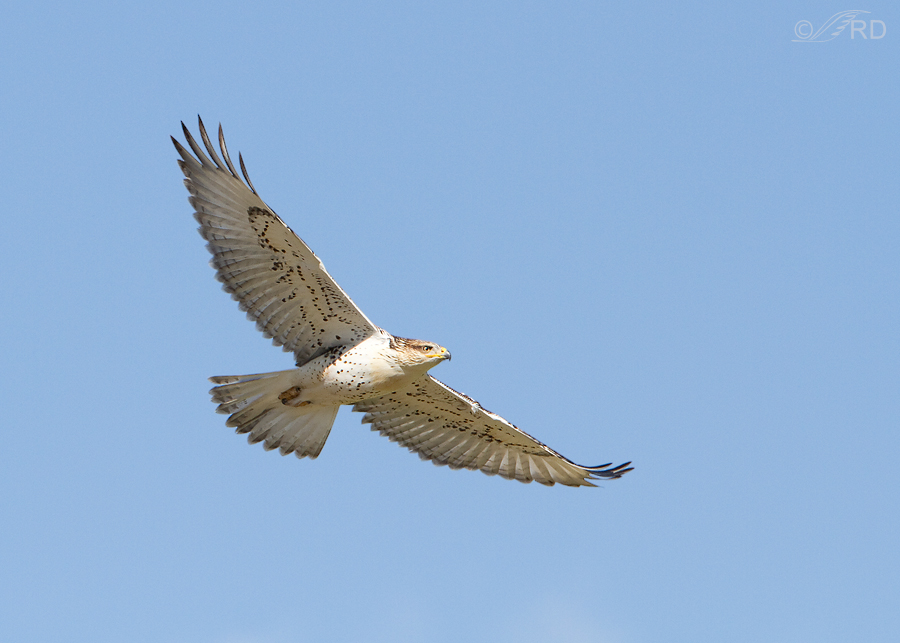
1/1250, f/7.1, ISO 400, 500 f/4
I wish I’d had my tc attached for the last few flight shots but there just wasn’t time to put it back on.
The perches weren’t natural but I’ve always been a fan of rustic settings and just to get close to a Ferruginous Hawk in good light was a huge milestone for me. This was one of those sessions with a bird that I won’t soon forget. Some of you may have noticed that in my excitement I forgot to adjust my settings for the situation in the first few shots. 1/6400 sec at ISO 640 for a static shot – sheesh!
Ron


Ron,
Beautiful photos of the Ferruginous Hawk. These photos are of a juvenile Ferrug, which explains why you were able to get closer. The juvenile birds aren’t as nervous about strange beings(people), or objects (vehicles) as the adult birds are. I am a licensed falconer in Oklahoma, and am following the migration of the Ferruginous Hawks, as I am hoping to be able to get one for Falconry, as well as conservation. I love the look of these regal birds. I have been studying their way of life, migration habits, and of course their absolute beauty. Thank you for the awesome insight to a truly magnificent species.
Thank you,Shannon and good luck with the Ferrug. I’ve heard that they’re not often used for falconry.
If you want me to take you, I can lead you to a ton of Ferruginous this coming fall. I know of a few nesting locations here in Utah.
As always, AWESOME job! I agree Ferruginous are difficult to get close to and get great pictures. I’ve been waiting for a whole year for the chicks to fledge at my nesting locations. Finally got some good shots of my own.
Frustrating birds aren’t they? Now I just need to have a better eye for Burrowing Owls. Small little buggers, saw my first one today at Antelope Island and got only one picture before my shutter scared it off.
Hey Matt. I’d love to see some of your Ferrugs. I find a few out in the west desert but nearly always have difficulty getting very close to them. “Small little buggers” is a perfect descriptor for the Burrowing Owl. They’re not a lot bigger than a meadowlark and it’s very easy to mistake a BO for a meadowlark at a distance when it’s perched on one of the sunflowers on the island – at least until they take off, as those little owls have an impressive wingspread for their size. And thanks for the nice comment.
Just stunning… I’ve never seen this particular hawk (not being in your area). REGAL is definitely an apt word to describe this guy, wow. I can’t believe he allowed you to approach so closely — thank goodness he did, such images for his magnificent self!
I appreciate the comment Christina. These birds are actually found throughout much of the American west but they’re “uncommon to rare” in most areas.
Absolutely fabulous photos! The clarity and crispness of all of your photos is just amazing! Thanks for sharing!!
Thank you Nicole.
Sensational awesome shots, Ron. I just had to share on Facebook. Everybody needs to see these.
Thanks a bunch Bob!
Wow, the Sun Hawk. An absolute treat. Perches are ideal to show off a bird’s bearing and posture, but I love the prairie grass shot. Ferruges seem so comfortable and “in place” on the ground. Regarding the brilliant launch shot: WHITE!
Thanks Mike, I’d never heard them referred to as Sun Hawks before. I love that “prairie grass” shot too.
Awesome photos…in regards to the tc…do you use it most of the time and do you have an issues with it? I’m considering purchasing one but am still undecided. I have a Canon 7D with a 100-400 telephoto that I primarily use but was hoping for a little extra distance…any suggestions?
Deb, I probably have the tc attached about 90% of the time and I have no issues with it when used with the 500 f/4. In my opinion you’d regret purchasing a tc for use with the 7D and 100-400 as you’d lose autofocus capabilities with that gear combination. I believe you’d need an f/4 lens to retain autofocus with a tc. And believe me, shooting a moving subject without autofocus is no picnic.
these are great great shots! thanks for sharing these, along with your camera settings, as they help us novices. Best regards
I appreciate your comment Rolando, especially about the camera settings having value for you. When doing a post they’re a pain in the patoot to deal with (look up, type in and check for accuracy) so it’s nice to know that it’s appreciated. And I know that it helps me when other photographers include them in their posts.
Let me know when you going!
I will for sure Tana.
What an incredible bird, and an incredible sequence of shots. Thank you.
Thank you Elephant’s Child.
I love these ghost-like birds, they are so pale and identifiable. And big. Your photos are always a treat, but these are some of my favorites. Thank you.
Thanks Tana. I think I remember that you once said in a comment that these birds abound around Teasdale. I might have to look for them in that area this fall.